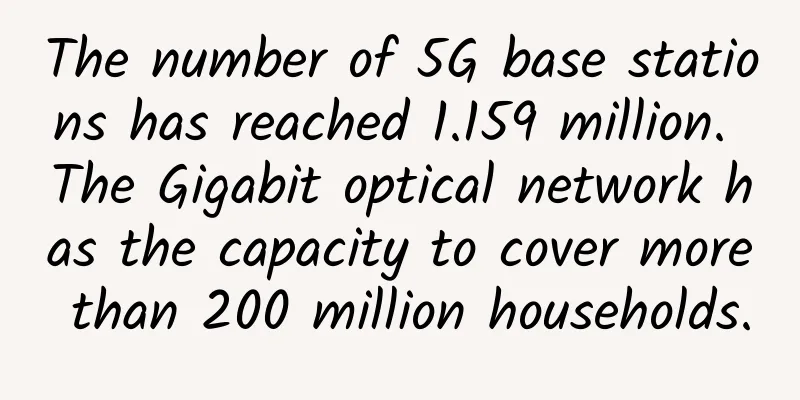Transforming the network to support remote work as a norm

|
Before the COVID-19 pandemic, remote work was more of a perk than a way of doing business. Now, tens of millions of people are working from home, many of whom will never return to the office. This new reality means that enterprise networks must evolve. Enterprise Management Associates (EMA) recently surveyed 303 IT professionals and published a research report, "Enterprise WAN Transformation: SD-WAN, SASE, and the Pandemic." The study found that before the outbreak, an average of about 14% of corporate employees worked from home regularly. More than half of these companies expect that the number of people working from home will continue to increase after the outbreak ends. This permanent shift means that IT companies need to adjust their network architecture and network operations. Evolving the Network with SD-WAN and SASE Software-defined wide area networks (SD-WAN) and secure access service edge (SASE) will be important technologies to support the shift to remote work network architectures. One of the essential elements of SD-WAN is creating an overlay layer of secure site-to-site connectivity over any network. In theory, SD-WAN can be extended to the home office, and the enterprises in our study recognize this opportunity. 84% of enterprises told us that SD-WAN can support business continuity during the pandemic, and the main opportunity for SD-WAN is to enable secure connectivity for home offices through the extension of the SD-WAN overlay. Many research participants also told us that they would like to apply the WAN remediation capabilities of SD-WAN solutions to home offices. For example, some vendors offer forward error correction capabilities on their equipment, which can improve the experience of home office users. In the future, some vendors may launch software clients with such capabilities. SASE is an emerging technology that will also support new network architectures. The concept of SASE is still emerging, and few vendors offer complete solutions, but right now, it is best described as the integration of cloud-delivered SD-WAN, secure remote access, and network security. In our new research, 82% of IT professionals believe that SASE can support business continuity during the pandemic. The main opportunity is secure remote access. EMA has observed that many SD-WAN vendors have evolved their solutions during the pandemic. Some have expanded coverage by discounting equipment or introducing new software clients. Others have accelerated their move to SASE by integrating secure remote access solutions with SD-WAN. Evolving Network Operations On the operational side, EMA found that IT organizations are prioritizing visibility into two key points in supporting the home-working user experience. First, 67% of IT organizations will focus on the health and performance of applications. This focus makes sense, as many IT organizations already have the ability to monitor their applications, especially those hosted within their own data centers. Cloud applications, especially SaaS applications, may require new tools and processes. For example, as conferencing applications like Zoom become more important, IT organizations may acquire new tools to directly monitor such SaaS services. Another focus for monitoring the remote work user experience is the availability and performance of local Internet service providers (ISPs). During the epidemic, ISP performance has been unstable, and remote workers compete with family members and neighbors for bandwidth. In addition to remote work, remote learning, telemedicine, online gaming, and streaming services have also experienced historical peaks, which has strained ISP networks. Looking ahead, IT companies need visibility into these networks to protect the home office user experience. ISP visibility will require new enterprise-class monitoring tools to expand support for home workers. Troubleshooting processes that rely on end users running speed tests on their local ISP will not scale. For example, an IT organization may have hundreds of users affected by the same ISP problem at the same time. Rather than collecting results from a single speed test, IT administrators will benefit from an end-to-end view of ISP performance, where they can proactively identify issues before end-user productivity is disrupted. Tools that passively monitor Internet traffic can help in this regard, or active monitoring tools that generate test traffic from a proxy on the client device can provide a more focused, systematic alternative to tests conducted by a single speed test application. EMA believes that enterprise networks will have great development after the epidemic, not only in home offices, but also in data center networks, and of course campus and branch office networks. |
>>: ByteDance 2: How many methods do you know to optimize HTTPS?
Recommend
How is Instagram expanding its infrastructure across the ocean?
【51CTO.com Quick Translation】In 2014, two years a...
PON is not just about “breaking” the network!
Have you ever complained in your heart about &quo...
How to protect your privacy in a zero-trust network? Introduction to the oblivious random access machine
When we watch spy movies, we often see undergroun...
Mellanox: Reconstructing the network world with data at the center
Not long ago, as a leading provider of end-to-end...
From CDN to edge computing, computing power evolution accelerates again
The COVID-19 pandemic has accelerated the global ...
Huawei Enjoy 10S, the year-end flagship phone worth 1,000 yuan, is officially released with full screen and camera upgrades
As the year draws to a close, the smartphone indu...
If IT operations and maintenance fail to do this, congratulations, you will be blamed for this.
When it comes to IT operations and maintenance, m...
Ruijie Networks kicks off its "Renewal Action" with the 2023 National Partner Conference
On April 7, the Ruijie Networks 2023 National Par...
Buying a ticket can cause a loss of 100,000 yuan. This is the black market you don’t know about.
Recently, Damai.com was attacked by a database co...
Gcore: KVM for more than 30 computer rooms with monthly payment starting from 3.25 Euros, USA/Hong Kong/Korea/Japan/Australia/Brazil/Germany, etc.
It has been a long time since I shared informatio...
It will take time for 5G cross-network roaming to become popular
On May 17, at the opening ceremony of the "2...
The secrets of the mobile data war: "Unlimited" is conditional
As the deadline for the cancellation of roaming c...
One year has passed since China's 5G license issuance, and these opportunities and challenges are becoming clearer
With the extensive publicity of the media and the...
Major opportunities and challenges of 400G Ethernet
400G Ethernet is here. It is certified by the IEE...
Yunke Tongming Lake: This piece of the puzzle is indispensable for building sustainable financial business capabilities!
As the digital transformation of the banking indu...









